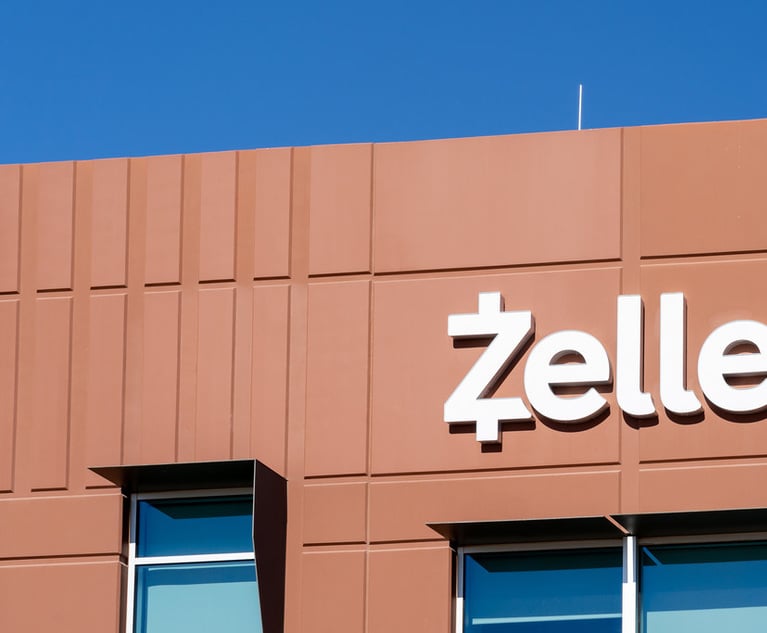Regulatory: Environmental Regulation Under the Obama Administration
EPA attempts to develop pollution controls that, although costly, promise enhanced health and life expectancy for millions of people.
June 08, 2010 at 08:00 PM
6 minute read
The original version of this story was published on Law.com
 The Obama Administration has undertaken a herculean effort to issue environmental regulations to control green house gas (GHG) emissions. The costs and health benefits of these rules will exceed many tens of billions of dollars over the next decade.
The Obama Administration has undertaken a herculean effort to issue environmental regulations to control green house gas (GHG) emissions. The costs and health benefits of these rules will exceed many tens of billions of dollars over the next decade.
In December 2009, EPA determined under the Clean Air Act that GHG emissions endanger human health and welfare. This conclusion required EPA to issue regulations restricting GHG emissions from mobile sources (cars and trucks) and stationary sources (industrial facilities).
In April, EPA and the National Highway Traffic Safety Administration (NHTSA) issued a joint “tailpipe” rule to regulate GHG emissions from automobiles and light trucks. EPA established GHG emissions standards, and NHTSA raised the Corporate Average Fuel Economy standards to 35.5 miles per gallon.
In October 2009, EPA required companies in the industrial sectors with the largest emissions to begin reporting their GHG discharges on a periodic basis. Additional rules will be issued to extend these rules to other industrial sectors. These data will provide the raw material from which future GHG control rules will be fashioned.
EPA will impose restrictions on stationary source emissions on the largest emitters first. EPA will issue a “tailoring rule” to determine the order and the time when industrial facilities will be required to obtain permits to limit GHG emissions. These restrictions will be phased in starting in 2011 for the largest industrial facilities. The threshold emission controls for the GHG permitting initially will be set at a high level and thereafter will be lowered in steps, while the permit requirement is extended to other industrial sectors.
EPA also has taken a series of actions that will alter the economics of using coal as a fuel to produce electricity. They include (1) issuance of guidance under the Clean Water Act for use in the permitting process for new surface coal mines, which will make it more difficult to locate future mines; (2) a rule to lower the permissible short-term emissions of sulfur dioxide from industrial facilities, which will require substantial reductions in emissions from coal-fired power plants, at a cost of $1.5 billion through 2020; (3) a proposed rule to govern the disposition of coal ash from coal-fired power plants, which may cost between $3 billion and $20 billion in future years.
In sum, EPA is attempting to develop pollution controls that will alter the incentives for industrial production and the country's choice of fuels at enormous cost but with the promise of enhanced health and life expectancy for millions of people.
John F. Cooney is a partner in the Washington, D.C., office of Venable.
Read John Cooney's previous column. Read John Cooney's next column.
 The Obama Administration has undertaken a herculean effort to issue environmental regulations to control green house gas (GHG) emissions. The costs and health benefits of these rules will exceed many tens of billions of dollars over the next decade.
The Obama Administration has undertaken a herculean effort to issue environmental regulations to control green house gas (GHG) emissions. The costs and health benefits of these rules will exceed many tens of billions of dollars over the next decade.
In December 2009, EPA determined under the Clean Air Act that GHG emissions endanger human health and welfare. This conclusion required EPA to issue regulations restricting GHG emissions from mobile sources (cars and trucks) and stationary sources (industrial facilities).
In April, EPA and the National Highway Traffic Safety Administration (NHTSA) issued a joint “tailpipe” rule to regulate GHG emissions from automobiles and light trucks. EPA established GHG emissions standards, and NHTSA raised the Corporate Average Fuel Economy standards to 35.5 miles per gallon.
In October 2009, EPA required companies in the industrial sectors with the largest emissions to begin reporting their GHG discharges on a periodic basis. Additional rules will be issued to extend these rules to other industrial sectors. These data will provide the raw material from which future GHG control rules will be fashioned.
EPA will impose restrictions on stationary source emissions on the largest emitters first. EPA will issue a “tailoring rule” to determine the order and the time when industrial facilities will be required to obtain permits to limit GHG emissions. These restrictions will be phased in starting in 2011 for the largest industrial facilities. The threshold emission controls for the GHG permitting initially will be set at a high level and thereafter will be lowered in steps, while the permit requirement is extended to other industrial sectors.
EPA also has taken a series of actions that will alter the economics of using coal as a fuel to produce electricity. They include (1) issuance of guidance under the Clean Water Act for use in the permitting process for new surface coal mines, which will make it more difficult to locate future mines; (2) a rule to lower the permissible short-term emissions of sulfur dioxide from industrial facilities, which will require substantial reductions in emissions from coal-fired power plants, at a cost of $1.5 billion through 2020; (3) a proposed rule to govern the disposition of coal ash from coal-fired power plants, which may cost between $3 billion and $20 billion in future years.
In sum, EPA is attempting to develop pollution controls that will alter the incentives for industrial production and the country's choice of fuels at enormous cost but with the promise of enhanced health and life expectancy for millions of people.
John F. Cooney is a partner in the Washington, D.C., office of
Read John Cooney's previous column. Read John Cooney's next column.
This content has been archived. It is available through our partners, LexisNexis® and Bloomberg Law.
To view this content, please continue to their sites.
Not a Lexis Subscriber?
Subscribe Now
Not a Bloomberg Law Subscriber?
Subscribe Now
NOT FOR REPRINT
© 2025 ALM Global, LLC, All Rights Reserved. Request academic re-use from www.copyright.com. All other uses, submit a request to [email protected]. For more information visit Asset & Logo Licensing.
You Might Like
View All

Coinbase Hit With Antitrust Suit That Seeks to Change How Crypto Exchanges Operate
3 minute read
Baker Botts' Biopharma Client Sues Former In-House Attorney, Others Alleging Extortion Scheme
Trending Stories
- 1'Pull Back the Curtain': Ex-NFL Players Seek Discovery in Lawsuit Over League's Disability Plan
- 2Tensions Run High at Final Hearing Before Manhattan Congestion Pricing Takes Effect
- 3Improper Removal to Fed. Court Leads to $100K Bill for Blue Cross Blue Shield
- 4Michael Halpern, Beloved Key West Attorney, Dies at 72
- 5Burr & Forman, Smith Gambrell & Russell Promote More to Partner This Year
Who Got The Work
Michael G. Bongiorno, Andrew Scott Dulberg and Elizabeth E. Driscoll from Wilmer Cutler Pickering Hale and Dorr have stepped in to represent Symbotic Inc., an A.I.-enabled technology platform that focuses on increasing supply chain efficiency, and other defendants in a pending shareholder derivative lawsuit. The case, filed Oct. 2 in Massachusetts District Court by the Brown Law Firm on behalf of Stephen Austen, accuses certain officers and directors of misleading investors in regard to Symbotic's potential for margin growth by failing to disclose that the company was not equipped to timely deploy its systems or manage expenses through project delays. The case, assigned to U.S. District Judge Nathaniel M. Gorton, is 1:24-cv-12522, Austen v. Cohen et al.
Who Got The Work
Edmund Polubinski and Marie Killmond of Davis Polk & Wardwell have entered appearances for data platform software development company MongoDB and other defendants in a pending shareholder derivative lawsuit. The action, filed Oct. 7 in New York Southern District Court by the Brown Law Firm, accuses the company's directors and/or officers of falsely expressing confidence in the company’s restructuring of its sales incentive plan and downplaying the severity of decreases in its upfront commitments. The case is 1:24-cv-07594, Roy v. Ittycheria et al.
Who Got The Work
Amy O. Bruchs and Kurt F. Ellison of Michael Best & Friedrich have entered appearances for Epic Systems Corp. in a pending employment discrimination lawsuit. The suit was filed Sept. 7 in Wisconsin Western District Court by Levine Eisberner LLC and Siri & Glimstad on behalf of a project manager who claims that he was wrongfully terminated after applying for a religious exemption to the defendant's COVID-19 vaccine mandate. The case, assigned to U.S. Magistrate Judge Anita Marie Boor, is 3:24-cv-00630, Secker, Nathan v. Epic Systems Corporation.
Who Got The Work
David X. Sullivan, Thomas J. Finn and Gregory A. Hall from McCarter & English have entered appearances for Sunrun Installation Services in a pending civil rights lawsuit. The complaint was filed Sept. 4 in Connecticut District Court by attorney Robert M. Berke on behalf of former employee George Edward Steins, who was arrested and charged with employing an unregistered home improvement salesperson. The complaint alleges that had Sunrun informed the Connecticut Department of Consumer Protection that the plaintiff's employment had ended in 2017 and that he no longer held Sunrun's home improvement contractor license, he would not have been hit with charges, which were dismissed in May 2024. The case, assigned to U.S. District Judge Jeffrey A. Meyer, is 3:24-cv-01423, Steins v. Sunrun, Inc. et al.
Who Got The Work
Greenberg Traurig shareholder Joshua L. Raskin has entered an appearance for boohoo.com UK Ltd. in a pending patent infringement lawsuit. The suit, filed Sept. 3 in Texas Eastern District Court by Rozier Hardt McDonough on behalf of Alto Dynamics, asserts five patents related to an online shopping platform. The case, assigned to U.S. District Judge Rodney Gilstrap, is 2:24-cv-00719, Alto Dynamics, LLC v. boohoo.com UK Limited.
Featured Firms
Law Offices of Gary Martin Hays & Associates, P.C.
(470) 294-1674
Law Offices of Mark E. Salomone
(857) 444-6468
Smith & Hassler
(713) 739-1250







